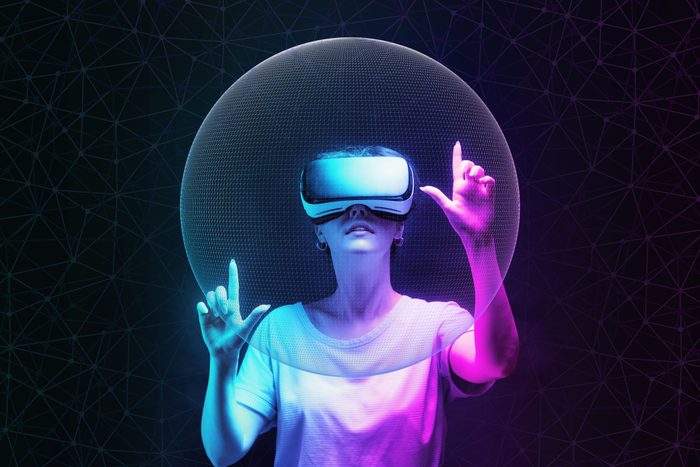 |
| Source-Digital Asset |
Art and technology, once thought of as two separate and distinct realms, have increasingly intersected in the modern world, giving rise to a plethora of digital art forms.
With the rapid advancements in technology over the past few decades, artists have found innovative ways to incorporate digital tools and techniques into their creative processes, pushing the boundaries of traditional artistic expression.
The result is a vibrant and evolving landscape of digital art forms that are captivating audiences and transforming the way we perceive and interact with art.
Digital art encompasses a wide range of artistic practices that utilize digital technologies as a primary medium.
It encompasses various disciplines such as digital painting, computer-generated imagery (CGI), virtual reality (VR), augmented reality (AR), interactive installations, and generative art, among others. These art forms leverage technology to create immersive and engaging experiences that go beyond the static nature of traditional art forms.
One of the most prominent digital art forms is digital painting. Digital painting combines the techniques and aesthetics of traditional painting with the flexibility and limitless possibilities offered by digital tools.
Artists can create intricate and detailed works using specialized software and digital brushes, manipulating colors, textures, and lighting to achieve their desired effects. The digital medium allows for experimentation and revision without the constraints of physical materials, enabling artists to explore new artistic territories.
Computer-generated imagery, or CGI, is another significant digital art form that has revolutionized the film, gaming, and advertising industries. CGI involves the creation of visual content using computer algorithms and software.
It has the ability to generate realistic or fantastical images and animations, opening up a world of creative possibilities for artists and filmmakers.
Virtual reality and augmented reality are digital art forms that merge technology with immersive experiences. Virtual reality refers to a computer-generated simulation of an environment that can be explored and interacted with by the user.
Artists are utilizing VR to create virtual galleries and spaces where viewers can step into and engage with art in unprecedented ways. Augmented reality, on the other hand, overlays digital content onto the real world, enhancing our perception of reality. .
Interactive installations have gained popularity in the digital art scene, offering viewers a participatory and multi-sensory engagement with art. These installations often utilize sensors, cameras, and other technologies to detect and respond to the presence and actions of viewers.
Through gesture recognition, sound, and motion, viewers become active participants, influencing and shaping the artwork in real-time.
Generative art is a digital art form that relies on algorithms and computational systems to produce artwork. Artists create rule-based systems or programs that generate artwork autonomously or in collaboration with the artist. The resulting pieces can be highly complex and intricate, with patterns and forms emerging through the interplay of algorithms and randomness.
The fusion of art and technology has also given rise to new avenues for artistic expression, such as digital performance art, data visualization, and internet-based art. Artists are using technology to create immersive live performances that combine digital projections, soundscapes, and interactive elements.
Data visualization transforms complex data sets into visual representations, allowing viewers to explore and interpret information in a more accessible and engaging manner. Internet-based art leverages the connectivity and reach of the internet to create art that is accessible to a global audience, blurring the boundaries between physical and virtual spaces.
The intersection of art and technology has not only expanded the possibilities for artistic expression but has also challenged traditional notions of art and the role of the artist.
With digital art forms, the artist becomes not only a creator but also a curator of experiences, designing immersive environments and interactive narratives. The audience is no longer a passive observer but an active participant, engaging with art in new and exciting ways.
Furthermore, the accessibility of digital art forms has democratized the art world, breaking down barriers to entry and enabling a more diverse range of voices to be heard. Digital tools and platforms have made it easier for emerging artists to create and share their work, bypassing the need for expensive art supplies or gallery spaces.
Online platforms, social media, and virtual galleries have become spaces for artists to showcase their creations, reach a global audience, and receive immediate feedback.
However, the rapid advancement of technology also raises important questions and challenges for digital art. The ephemeral nature of digital artworks poses challenges for preservation and conservation.
Unlike traditional art forms that can be physically preserved, digital art requires ongoing maintenance and updates to ensure its accessibility and longevity. Issues of ownership and authenticity also arise in the digital realm, as artworks can be easily reproduced and shared without proper attribution.
The immersive nature of digital art forms also raises questions about the impact on our perception of reality and the potential for escapism. As virtual reality becomes increasingly realistic and seductive, there is a concern that we may become disconnected from the physical world, preferring simulated experiences over real-life interactions.
Despite these challenges, the intersection of art and technology continues to push the boundaries of human creativity and imagination. Artists are constantly exploring new techniques, experimenting with emerging technologies, and redefining what it means to create and experience art.
The fusion of art and technology has the potential to inspire, challenge, and provoke, inviting us to question our assumptions, expand our perspectives, and engage with art in transformative ways.
Written by- Samriddhi Gauniyal
Edited by- Aastha setia











0 Comments